Further Applied Year 1 Definition
1/68
There's no tags or description
Looks like no tags are added yet.
Name | Mastery | Learn | Test | Matching | Spaced |
|---|
No study sessions yet.
69 Terms
Sum of probabilities = …
1
Expected value E(X)
As no. Of observations increases, mean gets closer to expected value of discrete random variable.
E(X) = sum of [x P(X=x)]
E(X²) =…
Sum of [x² P(X=x)]
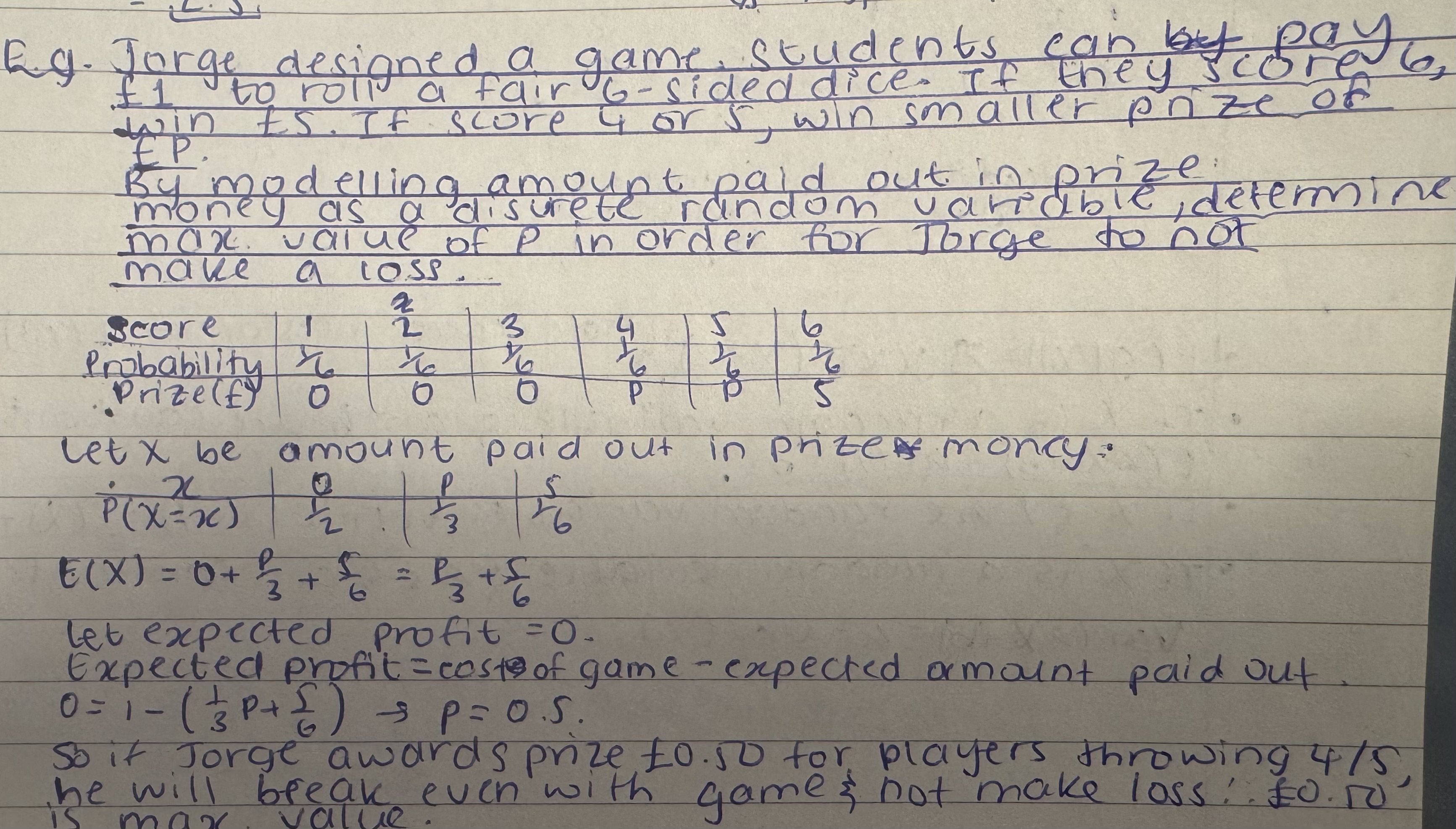
Var(X)
E(X²) - E(X)²
Comes from:
Var(X)= E( (X-E(X) )² )
Measure of spread. Larger it is, more likely X is to take values different to expected
E(aX+b)
aE(X) + b
Var(aX+b)
a²Var(X)
Poisson Distribution
Discrete. An infinite probability distribution.
Poisson distribution P(X=x)
(e^-lambda)(lambda^x)/x!, where X can only take positive integer values
Use when algebra involved
How must events occur for Poisson to be a good model
independently
One at a time (singly in time/space)
At a constant average rate
What is lambda in poisson
Average number of times an event will occur in a single interval
If X~B(n,p), n is large and p is small, then it can be approximated by…
X~Po(np).
For binomial, mew=np and sigma²= np(1-p)
Variance, Var(X) for poisson is also…
Lambda
For poisson, if X~Po(lambda) and Y~Po(mew), then…
X+Y~Po(lambda+mew).
X and Y must both model events occurring within same interval of time or space
For poisson, P(both X and Y are greater than 2) =…
P(X>2) x P(Y>2)
If mean ≈ variance,
Poisson is suitable model to use
ALWAYS DEFINE X FIRST IN ANSWER!!!!
Difference between poisson and binomial
Poisson is unbounded whereas binomial is bounded by n
Hypothesis test for mean of poisson distribution
Null, Ho: lambda = m is value of mean you assume to be true
H1: tells you about value of mean if your assumption is shown to be wrong
For 2 tailed tests, probability needs to be as close to significance level as possible to be in CR, not just smaller!!!

Goodness of fit
Measuring how well an observed frequency distribution fits to a known distribution.
Ho: there’s no difference between observed and theoretical distribution
H1: there’s a difference between observed and theoretical distribution
Measure of goodness of fit equation
X² = sum of [Oi²/Ei] -N
The higher the value of X², the less similar the observed distribution is to theoretical distribution
Way to write goodness of fit hypotheses
Ho: Observed data drawn from discrete uniform distribution
H1: Observed data not drawn from discrete uniform distribution
No. of degrees of freedom (nu)
= no. of cells after combining - no. of constraints
No. of constraints
total number for frequency is fixed so is a constraint
If estimate for parameter is calculated then is a restriction, BUT if guessed by using sensible estimate from observation, then not.
Critical value at sig. level for Chi Squared
X²nu (sig. level) = ____
What if X² exceeds sig level
Sig level is probability that distribution exceeds critical value. E.g. X²2 (95%) =0.103 so P(X²2 > 0.103) = 95%
If X² exceeds critical value, its unlikely that null hypothesis is correct so reject it in favour of alternative.
HYPOTHESIS TEST FOR GOODNESS OF FIT IS ALWAYS ONE TAILED. CR IS ALWAYS SET OF VALUE GREATER THAN CRITICAL VALUE
Equation for estimating p
(Total no. of successes) /(no. of trials x N)
Where N is no. or observations.
Estimating for lambda for poisson equation
Total no. Of successes/ N
For last cell, Ei found by P(X>=r). DONT do this for when estimating for p
If asked how estimating p would affect test, say
whether conclusion changes, because nu would decrease so CR will change. Check if X² in CR or not after change
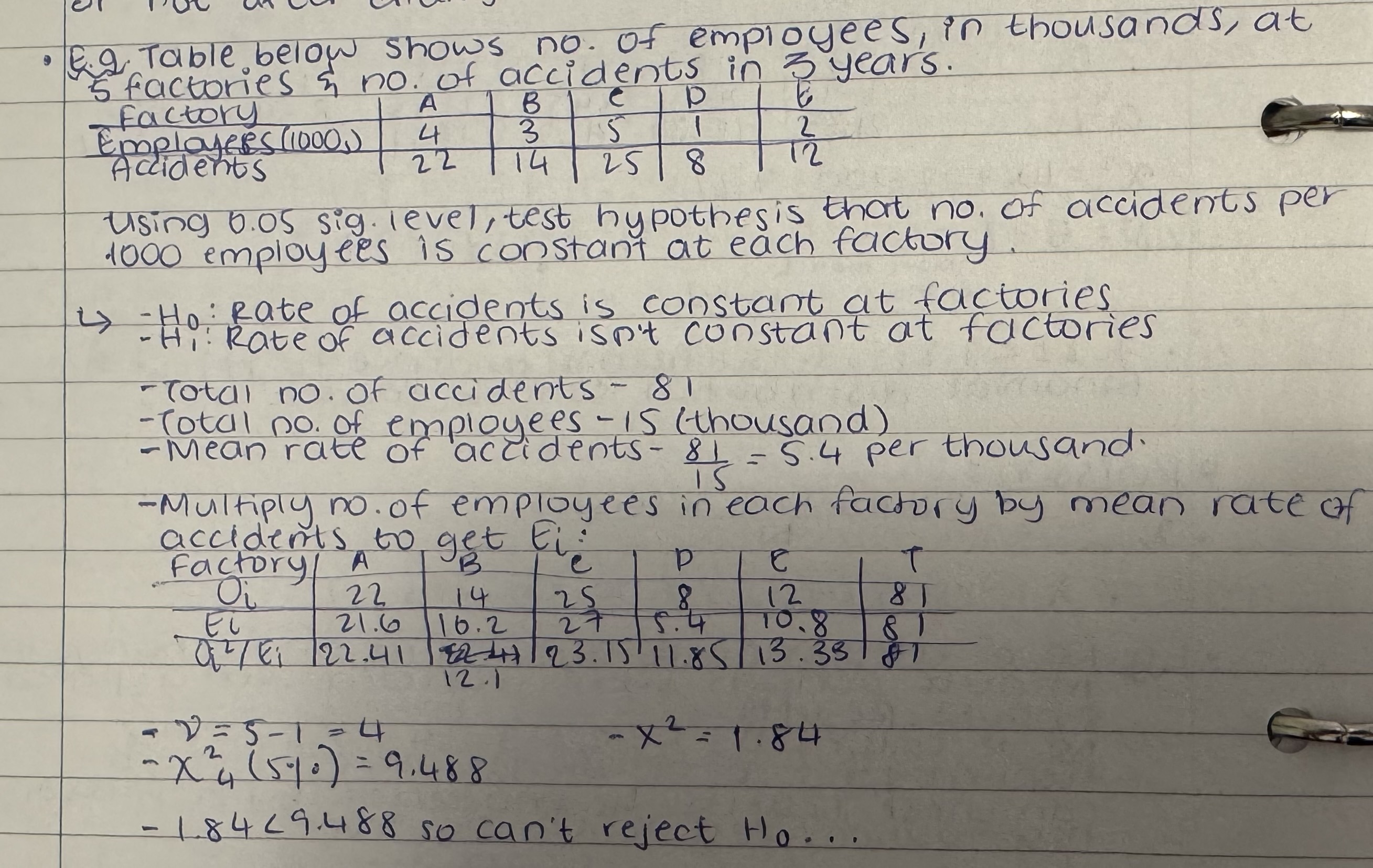
Contingency table hypotheses
Ho: rows and columns are independent
H1: rows and columns are not independent
Contingency table expected frequency
(Row total x column total) / grand total
If expected frequency in any column < 5, combine columns
Degrees of freedom for contingency tables
(No. Of rows - 1) x (no. Of columns - 1)
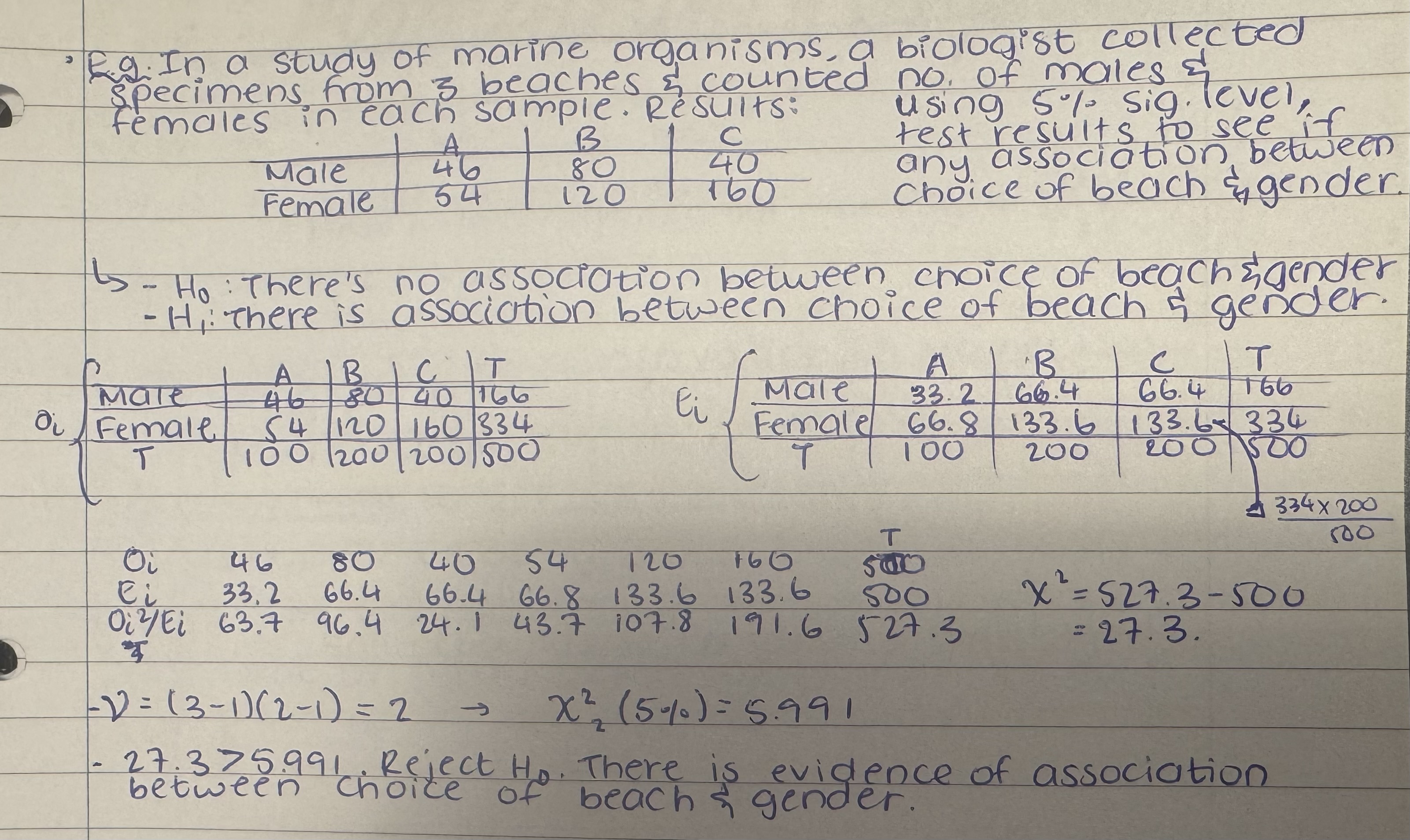
Momentum
Mass x velocity
Impulse
Change in momentum
Force x time
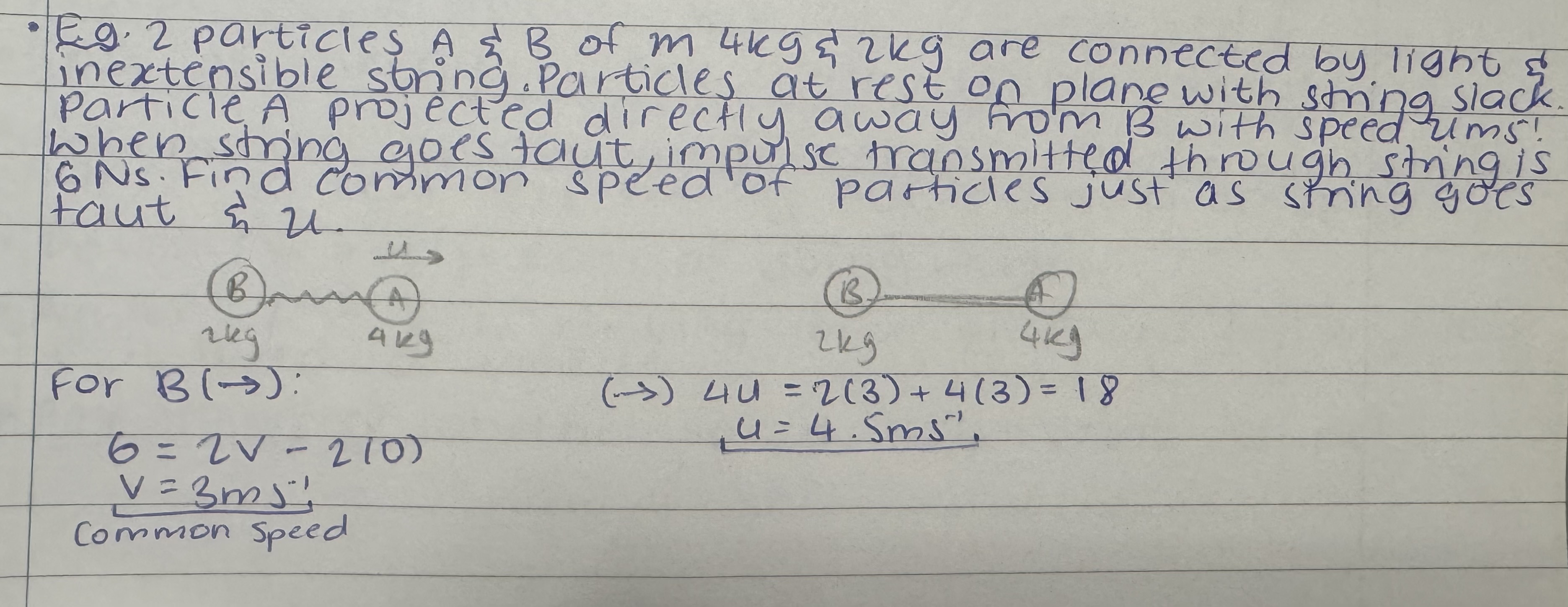
Work done
Component of force in direction of motion x distance moved in direction of force
Frictional Force F
Mew x R
Mew is frictional coefficient (0<=mew<=1)
R is normal reactant force
What does arcsine mean
Inverse of sine
Potential energy
Mgh
Work done by force which accelerates a particle horizontally
Change in KE
Decrease in PE =
Increase in KE for something falling
Total lost of energy =
KE lost - PE gained
Loss of energy =
Work done against friction
Principle of conservation of mechanical energy
When no external forces other than gravity do work on a particle during its motion, sum if particle’s KE and PE remain constant
Work energy principle
Change in total energy of a particle during its= work done on particle
Assumption usually made in mechanics questions
Resistive forces are constant. Probably not true in reality and changes with speed
Power
Rate of doing work
Power and force equation
Power = Fv, where F is driving force produced by engine and v is speed of vehicle
Only works when SPEED IS CONSTANT!!!!
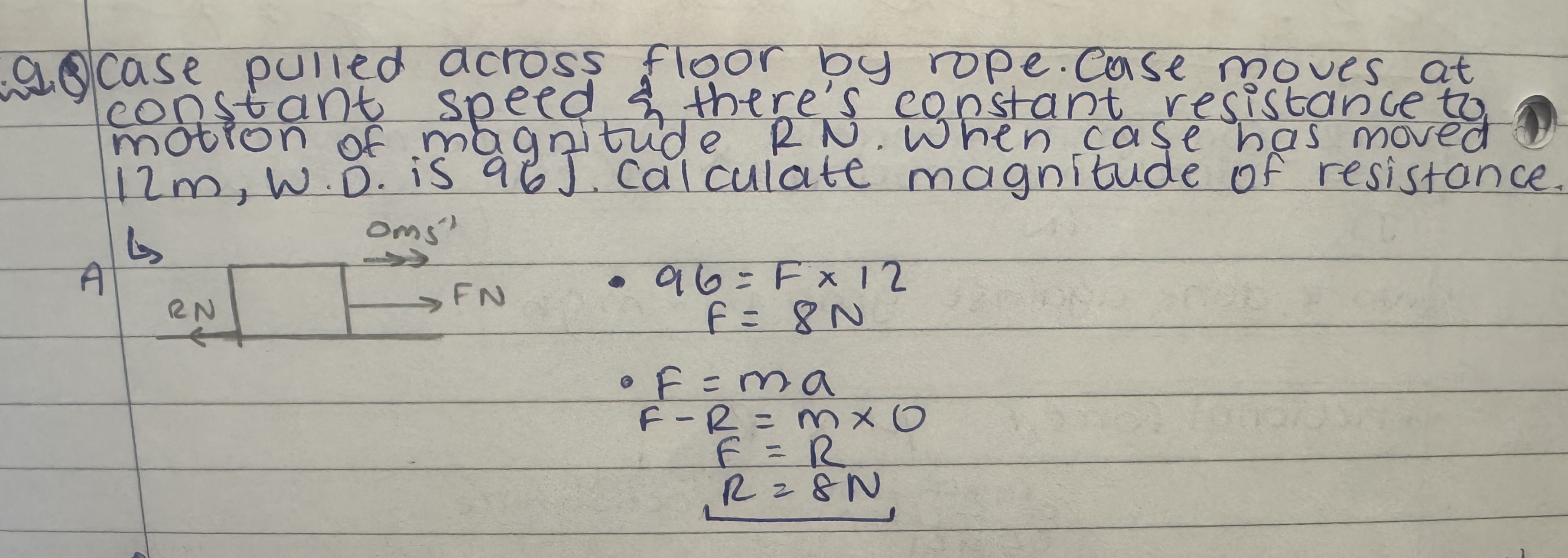
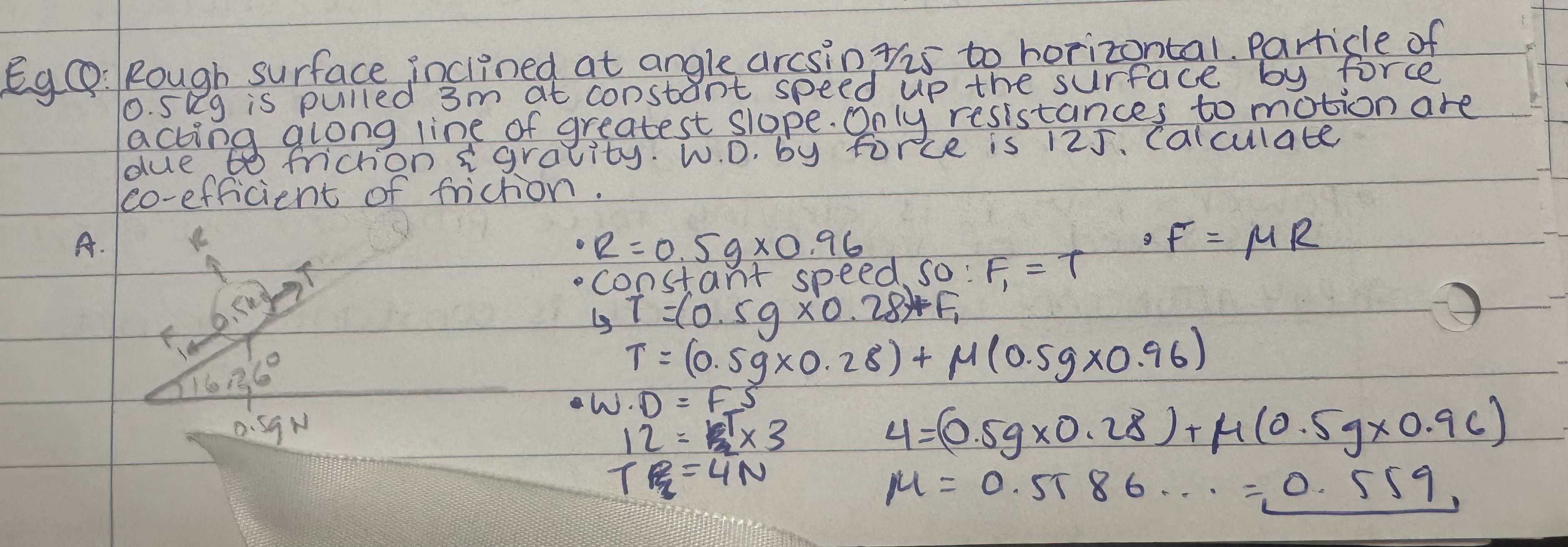
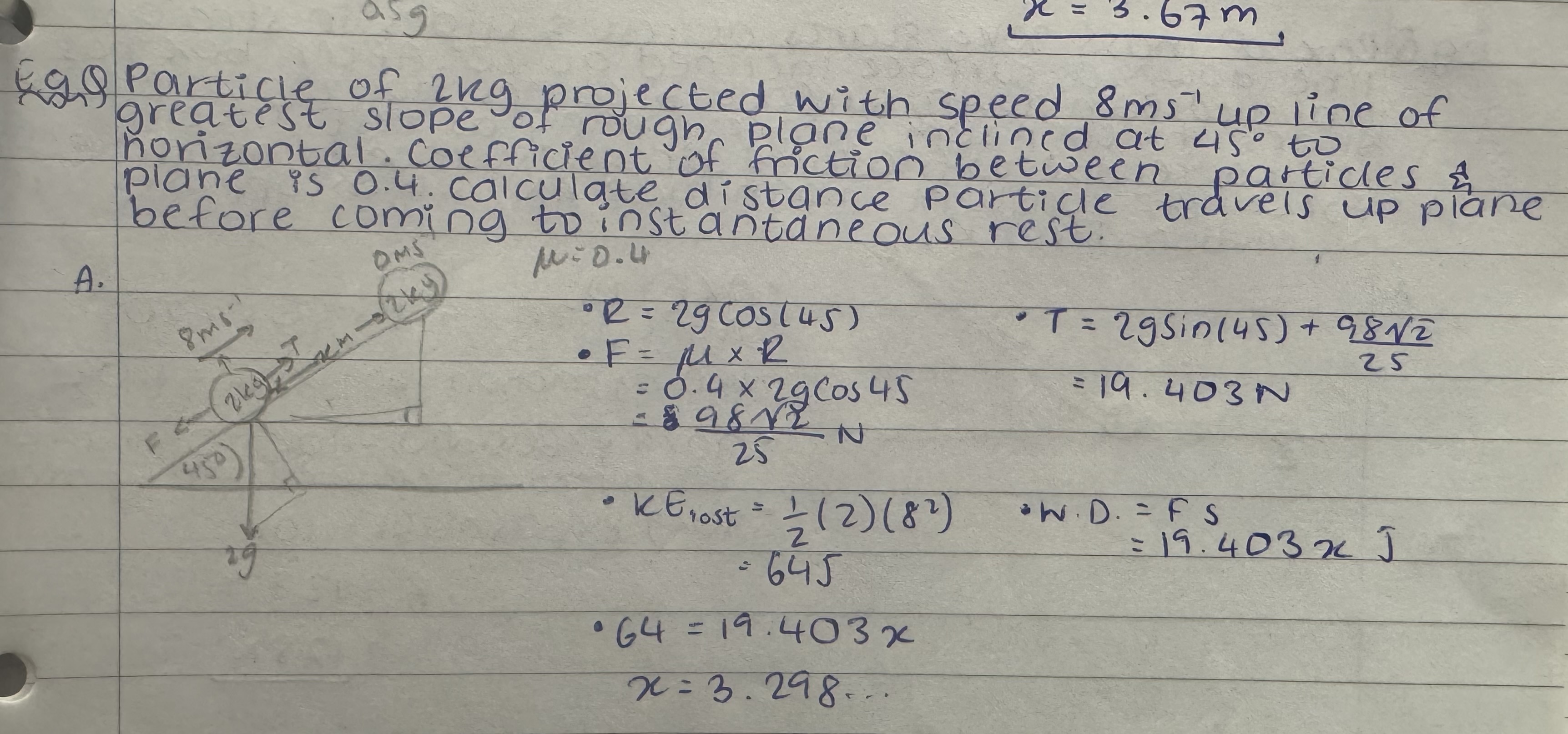
Newtons Law of restitution
e=relative speed of separation of particles/relative speed of approach of particles
0<=e<=1
In perfectly elastic collision, e=___
1
In perfectly inelastic collision, where particles coalesce, e=___
0
For direct collision of particle with smooth plane, e=___
Relative Speed of rebound/relative speed of approach

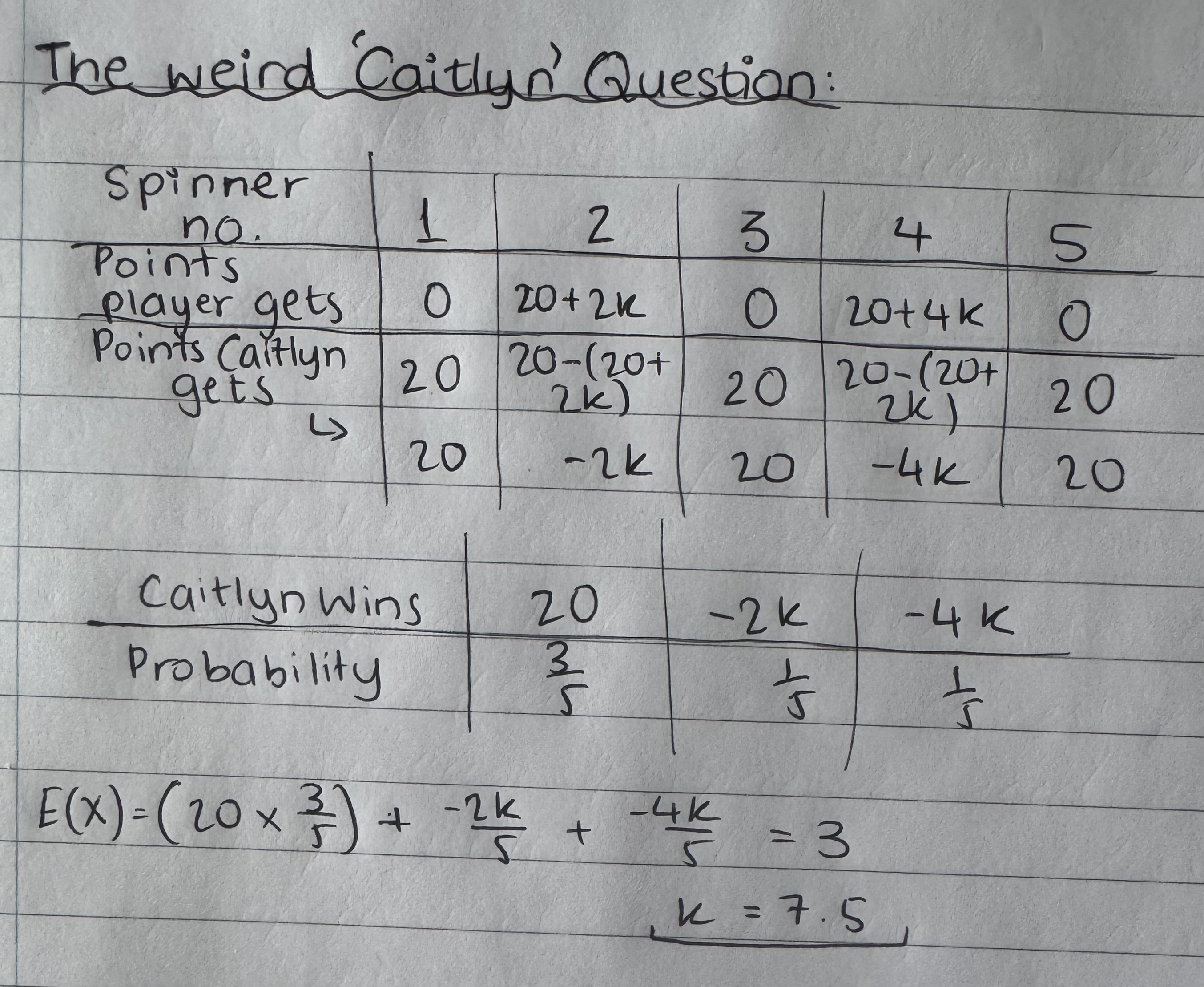
DONT FORGET TO STATE HYPOTHESES!!!!!!
Discrete uniform distribution if e.g. spinner is fair!!!
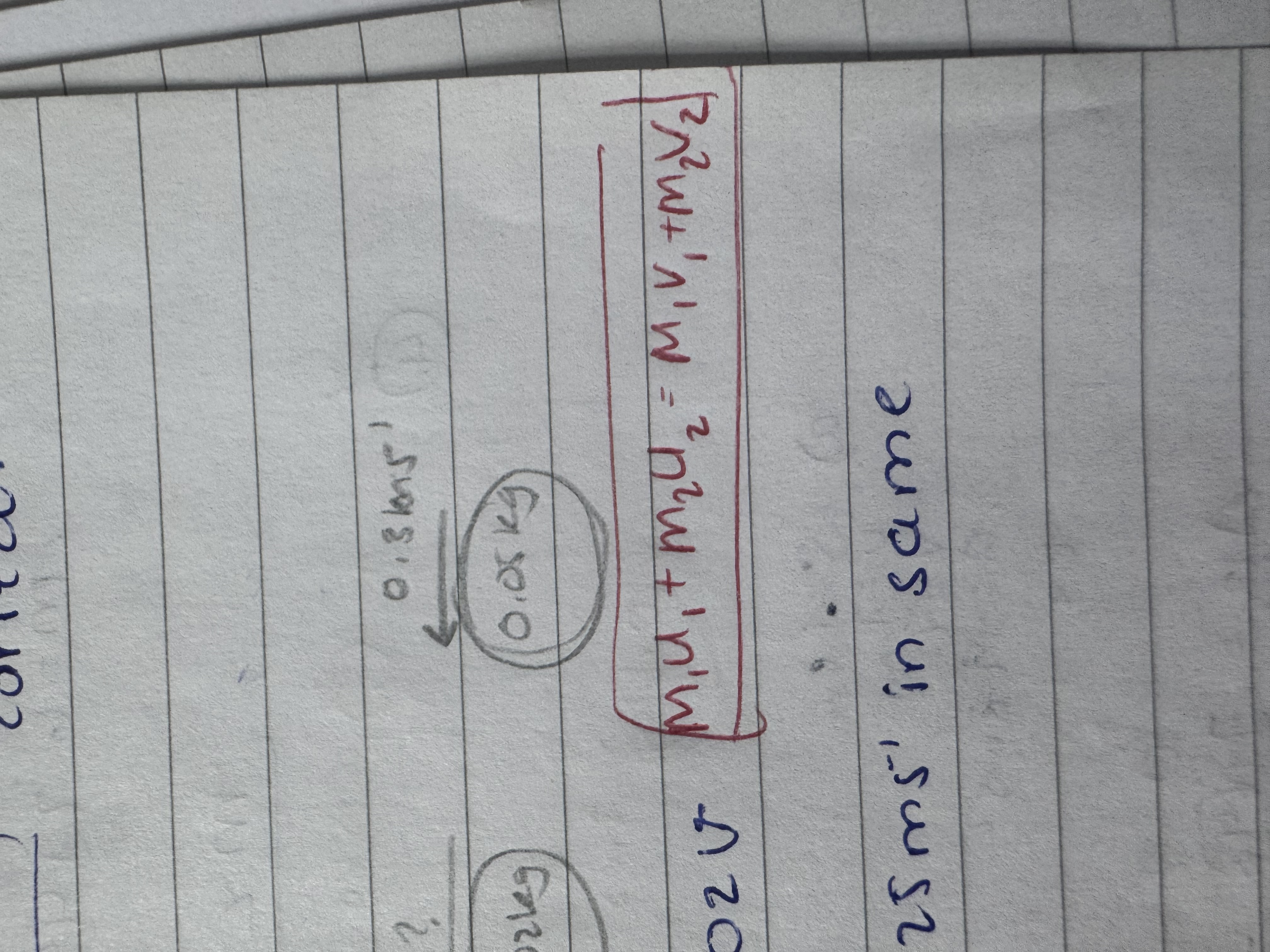
MUST STATE CONSERVATION OF MOMENTUM EQUATION BEFORE STARTING TO SOLVE!!!!
ALWAYS STATE WHICH EQUATION UR USING BEFORE USING AND ALSO WHY (e.g. momentum is same before and after etc)!!!!!
If question with drag and velocity, state drag is directly proportional to velocity!
STATE ALL LAWS, EQUATIONS, ETC BEFORE USING!!!!
For poisson, if P(X=0), most likely have to use poisson formula!!!!